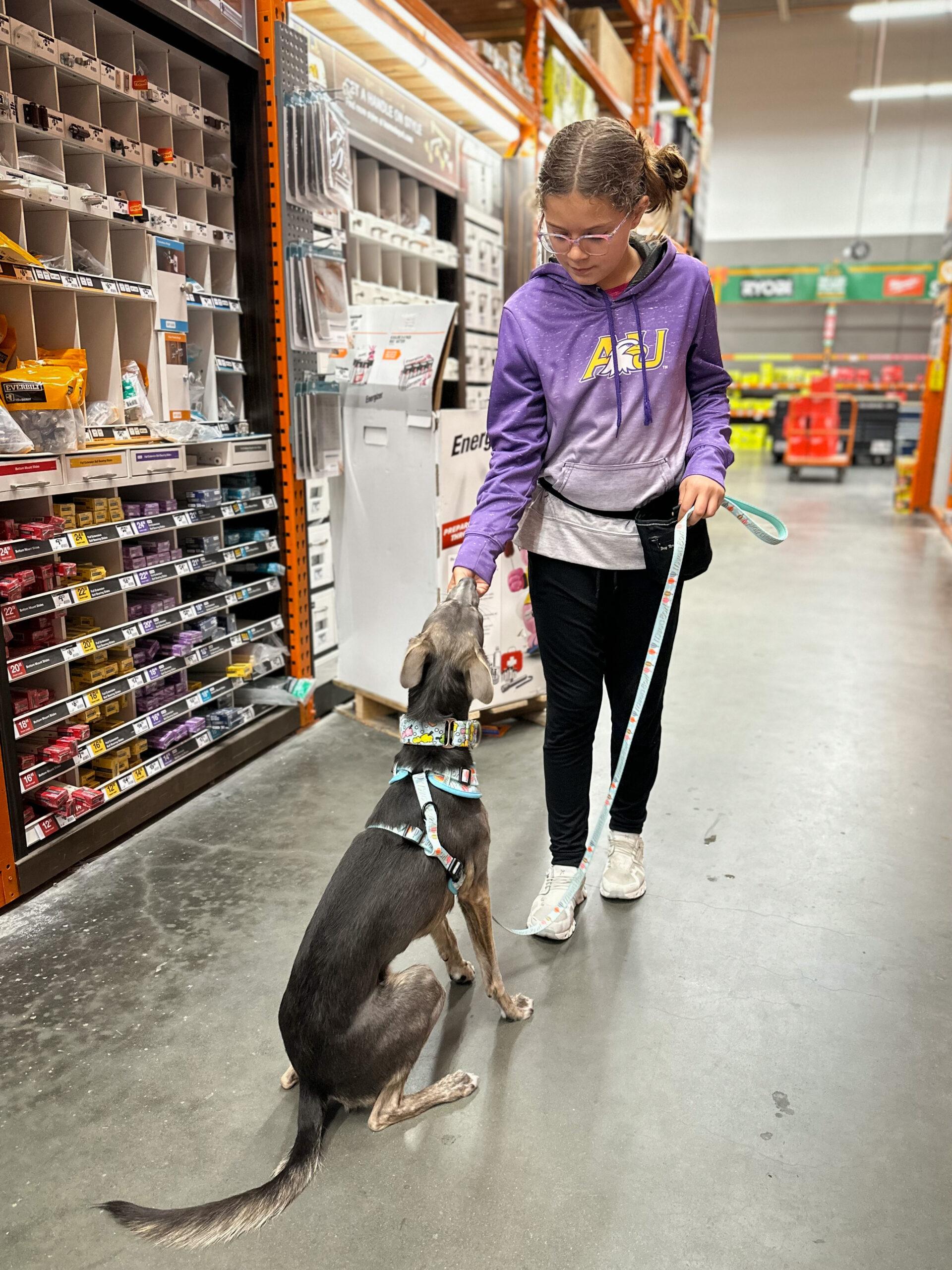Essential Tips for Successful Dog Training: A Guide for Animal Owners
Efficient dog training is a complex process that calls for a critical approach customized to both the pet's character and the proprietor's purposes. Secret components such as establishing regular commands, employing favorable support, and facilitating early socializing play important functions in promoting a well-adjusted canine buddy. Nonetheless, many pet dog proprietors come across challenges that can hinder progression, bring about disappointment and unpredictability. Recognizing just how to navigate these barriers can substantially boost the training experience, eventually transforming the relationship between owner and pet. What are the essential strategies that can be utilized to ensure success in this venture?
Comprehending Canine Behavior
Understanding pet habits is vital for reliable training and cultivating a harmonious relationship in between canines and their owners. Canines interact largely with body language, vocalizations, and actions, making it important for proprietors to translate these signals precisely. Identifying a dog's stance, tail setting, and ear positioning can offer understandings into its psychological state. A wagging tail does not always indicate joy; it can also signal exhilaration or anxiousness.

Socializing plays a considerable duty in dog actions; direct exposure to various environments, individuals, and various other animals can substantially influence a pet dog's temperament. Factors such as type features and private personality need to direct training methods, as some types might have certain behavior attributes that demand customized strategies. By comprehending these aspects, owners can create an encouraging atmosphere that encourages favorable actions, causing effective training outcomes and a much deeper bond with their pet dogs.
Establishing Consistent Commands
Reliable interaction with your dog begins with establishing consistent commands. This foundational aspect of training is crucial for cultivating understanding in between you and your family pet. Consistency in the commands you make use of ensures that your dog can accurately associate certain words or expressions with the preferred behaviors.
When choosing commands, pick clear, distinct words that are easy to distinguish and state from one an additional. Prevent using similar-sounding commands that might perplex your canine. Utilizing "sit" and "stay" is appropriate, however "sit" and "struck" can lead to misunderstandings.
Additionally, keep the very same tone and volume for every command. Pets are sensitive to vocal hints, so differing your tone can develop confusion.
It is similarly essential to make certain that all member of the family get on the same page pertaining to the commands utilized. A united front in command usage will protect against combined signals and strengthen the discovering process.
Positive Support Methods
The power of positive support in pet training exists in its capability to encourage preferred behaviors via incentives and praise. This technique is based in the principle that actions complied with by positive outcomes are most likely to be repeated. By including positive support into your training routine, you can successfully shape your pet's habits in a positive way.
To implement favorable reinforcement, it's vital to determine what inspires your dog, whether it be deals with, toys, or spoken appreciation. When your canine executes a preferred activity, such as sitting on command, instantly compensate them with a treat or love. This association in between the command and the positive end result strengthens their understanding.
It's vital to timing the rewards appropriately; delivering the support within secs of the desired habits helps your pet dog make the link (dog training). In addition, consistency is vital-- guarantee that all household members utilize the same commands and benefit systems to prevent confusion

Progressively, you can reduce the frequency of deals with as your pet learns the behavior, transitioning to applaud or recurring incentives. This method not only promotes a strong bond in between you and your pet yet also promotes a positive discovering setting, making educating a pleasurable experience for both.
Socialization and Communication
Continually revealing your you can try this out dog to a variety of environments, people, and various other pets is essential for their social development. Socialization must start early, preferably during the important home window of 3 to 14 weeks, when young puppies are most responsive to brand-new experiences. Nonetheless, older pet dogs can additionally take advantage of continuous socializing efforts.
Present your pet dog to various setups, such as parks, pet-friendly shops, and metropolitan areas. This exposure helps them adapt to various stimuli, minimizing stress and anxiety and concern actions. Urge favorable communications with various other canines and people, making sure that these experiences are controlled and safe to foster self-confidence.
Use structured playdates with courteous dogs, as this can enhance your pet's social abilities and teach them proper behavior. Obedience courses and training sessions also provide exceptional possibilities for socializing, allowing your dog to engage with others in a monitored environment.
Monitor your canine's body language during communications, as this will certainly assist you assess their comfort degree. Slowly enhance direct exposure to even more challenging circumstances while ensuring that each experience is favorable. A well-socialized pet is more probable to exhibit well balanced behavior, making them a happiness to have in any type of setting.
Dealing With Common Training Obstacles
Every pet dog proprietor will encounter training difficulties at some factor, despite their dog's age or socializing level. Recognizing typical issues such as stubbornness, diversions, and fearfulness can aid in establishing reliable approaches for enhancement.

Disturbances throughout training sessions can thwart emphasis. To fight this, start training in a peaceful setting with minimal stimulations. Progressively introduce diversions as the pet ends up being much more competent in commands. Short, regular training sessions are also efficient in preserving attention.
Terror can prevent a pet dog's understanding process. Progressive desensitization to the resource of concern, combined with favorable support, can aid reduce anxiety. Patience is essential; never force a pet right into a scenario that creates distress, as this may worsen the issue.
Inevitably, understanding and addressing these common obstacles with a structured approach will certainly cultivate a much more effective training experience, enhancing the bond in between pet and owner while advertising effective discovering.
Final Thought
In summary, successful dog training depends on a detailed understanding of canine behavior, the facility of regular commands, my review here and the application of favorable support methods. Socialization plays an essential duty in establishing well-adjusted animals, while resolving typical training obstacles calls for persistence and flexibility. By implementing these vital methods, pet dog owners can cultivate a strong bond with their pet dogs and promote desirable behaviors, eventually causing a harmonious partnership between human beings and their canine friends.
Recognizing canine habits is essential for efficient training and fostering an unified relationship in between canines and their owners.Socialization plays a significant function in dog behavior; direct exposure to different atmospheres, people, and other animals can considerably affect a canine's Learn More temperament.The power of positive reinforcement in pet dog training lies in its ability to motivate desired habits with incentives and praise. By incorporating positive reinforcement right into your training program, you can properly shape your dog's behavior in a constructive way.
In recap, effective pet training relies on an extensive understanding of canine behavior, the establishment of consistent commands, and the application of positive reinforcement techniques.
Comments on “The Benefits of Early Dog Training for a Well-Behaved Pet”